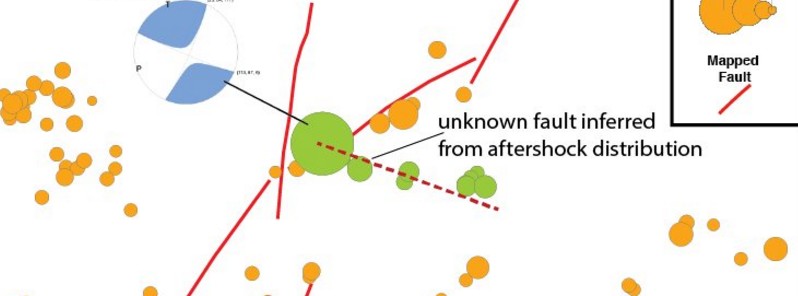Oklahoma’s M5.8 earthquake activated an unknown fault

USGS Geophysicist Daniel McNamara said that September 3, 2016 Mw5.8 Pawnee, Oklahoma earthquake was not on a fault known by the USGS.
Instead, it happened on a fault perpendicular which intersected the fault. Based on aftershock patterns, this one is an unknown fault that has now been activated.
"Aftershocks from that earthquake show the undiscovered fault line that runs near or through Stillwater, Oklahoma," McNamara said.
“At this point, we don’t know if the quake is related to wastewater injection, but it’s very similar to other sequences that have been, so it’s highly likely,” said McNamara.
However, he said, this earthquake also looked natural in some ways based on the before-shock behavior. "There were only a few two to three magnitude earthquakes leading up to the big shake. This is compared to 2011 in Prague when there were three and four magnitude earthquakes before the major one."
“Magnitude fives occurred in Oklahoma maybe once every 50 to 100 years, naturally occurring earthquakes,” said McNamara. “But in the last five years, you’ve had three earthquakes over magnitude 5.”
Aftershock locations show a previously unknown conjugate fault has been activated. @USGS_Oklahoma pic.twitter.com/RCIgCmAMXK
— Daniel McNamara (@DanielEMcNamara) September 3, 2016
The recently discovered fault has the potential to produce a larger earthquake, McNamara concluded.
On September 7, 2016, the U.S. Geological Survey has updated the official magnitude of the Pawnee earthquake to Mw5.8 (from 5.6), making it Oklahoma’s largest recorded earthquake to date.
"The magnitude revision is based on further in-depth analysis of seismic recordings. Changes in estimated magnitude for an earthquake are common in the hours-to-days following the event, as more data are analyzed in greater detail than is possible in the first minutes after the earthquake occurs," the agency said in a statement on September 7.
USGS has also updated the official magnitude of the November 6, 2011 Prague, Oklahoma earthquake to Mw5.7 (from 5.6), making it the second largest earthquake to hit the state. Previously, it was considered as the largest.
Questions regarding their relative size prompted a re-analysis of both earthquakes and both updates are the result of comprehensive studies of the long-period, globally-recorded seismic data for these earthquakes, using consistent approaches and datasets for each event, USGS explained.
Featured image credit: Daniel McNamara

Commenting rules and guidelines
We value the thoughts and opinions of our readers and welcome healthy discussions on our website. In order to maintain a respectful and positive community, we ask that all commenters follow these rules.